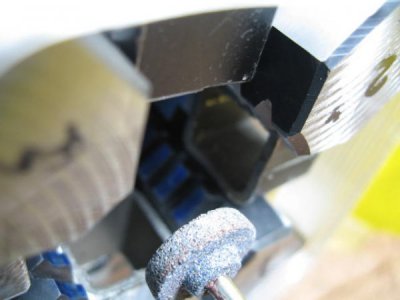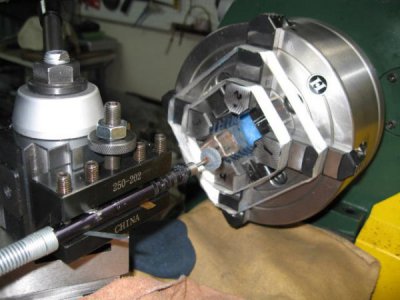- Joined
- Mar 20, 2014
- Messages
- 440
Boy am I glad I posted this question, while still in the "thinking stage". Thanks to all for your concern for my safety. Well, my idea, although still pretty bad I guess, was not quite as bad as some of you thought. Allow me to at least partially redeam myself. I certianly wasn't going to use this as an "extended router", or even as a hand held " long nose die grinder". Sorry I didn't put this in the first post, but kd4gij nailed it, I was thinking of an inexpensive way to set up a quick "tool post grinder" to grind the jaws on a badly machined chinese 4 jaw that's not usable as is. I already have the little trim router, and aluminum plate for a sturdy mount to the compound, and come to think of it, somewhere I'm sure I have one of those "router speed controls" (if I can find it) that I could use to get the RPM's down. I could even re-evaluate the 4" length, and make it just long enough to reach in to the back of the chuck jaws, maybe 2 or 2 1/2" . Also, instead of the collet nut and collet on the end, I could do as Tony Wells did and just have a "concentric" "perfectly true" "reamed" hole with a set screw to hold a small grind stone with 1/4" shaft. Well, what do you all think now? Still a bad idea? Probably so, but even if this idea goes no further, I would still love to learn how you guys would make a shaft like I described in the OP, and have it run true (order of ops). Thanks again, for your safety concerns, and help. JR49



